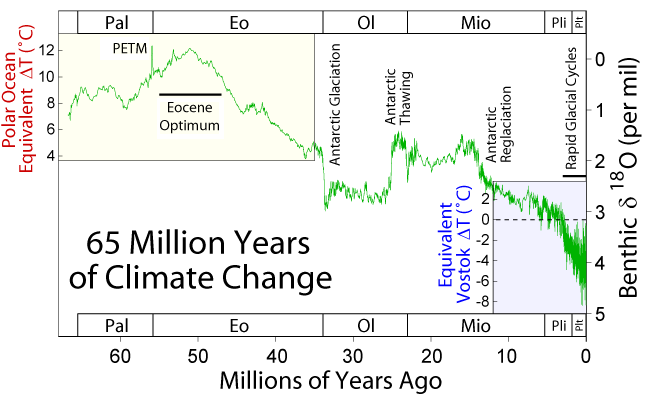Some 55 million years ago, when climate was altogether a whole lot hotter than it is now, suddenly something happened. Climate records showed a very abrupt peak. Temperature went up like the clappers, and there was a lot of light carbon around. I don't know what the people thought when they saw this for the first time. My reaction would probably have been 'something must have gone wrong! Did I sneeze in these samples or something?' But it turned out to be real.
Quite soon people figured that that light carbon could mean a lot of methane had escaped from somewhere. Probably clathrates! And that's disconcerting. There is still a lot of that stuff around. Clearly, something can happen to trigger its release, and then the freed methane has a massive greenhouse effect, which releases more methane. And then you get a spike like that in your climate records.
All that climate mayhem caused an extinction event. It wasn't one of the big ones; the one that killed the Dinosaurs some 10 million earlier, for instance, was much more severe. But there was rapid warming, and ocean acidification, and disruption of ocean circulation, and whatnot, Very interesting to study!
Image by Robert A Rohde, based on data by Lisiecki and Raymo, 2005; Petit et al., 1999 and Zachos et al., 2001
Our student liked the thought of that. And our industrial partner suggested some articles to start with. So I started to read up on them (I have only worked with much more modern forams) and ponder what we could do with this. You can't redo the things the authors have already done! But I found that one of the suggested articles came with the raw data, and that I could also find raw foraminifera data from a different ocean. And that gave me an idea. Compare the two oceans! See how the situation compared. Where would you wanted to have been back then; in the Tethys to the Atlantic? How different were these basins to start with? Did the event develop in the same way? Did it happen at the same speed? Was it the same kind of forams who were affected? Was recovery equally rapid? Et cetera! I think this would be cool. I hope the student does too, and that he still thinks it at the end of the project! It's a pity he won't get to go out on a boat and won't get mud in his hands and won't look at actual forams, but hey ho, nothing is normal these days. And maybe thinking about some other time when awful things happened but everything also restabilised relatively rapidly might be quite nice in times like these!

No comments:
Post a Comment